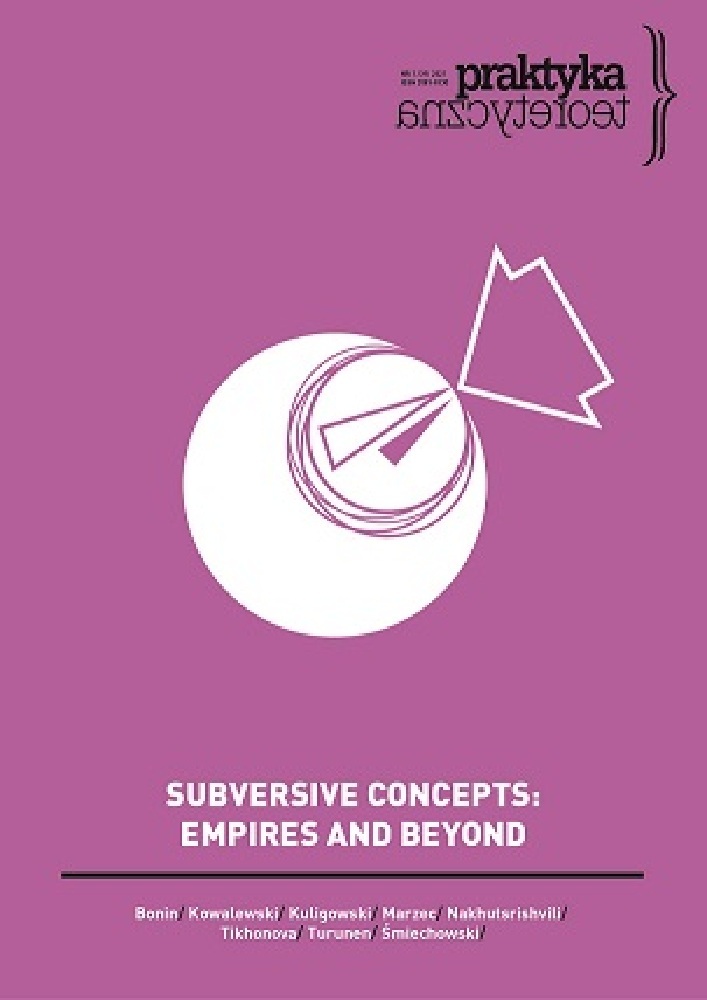Abstract
This case study examines the bilingualism of the prominent Russian Muslim newspaper of the late nineteenth to early twentieth centuries, known as the Perevodchik-Terjiman (literally “Translator” or “Interpreter”) by means of discourse analysis. This newspaper was published from 1883 to 1918 in Crimea, until 1914 by Ismail Gasprinskii (1851‒1914), a prominent enlightener of Russian Muslims. Until December 1905, the newspaper was issued in two languages–Russian and so-called common-Turkic. The latter language was unsuccessfully intended to become a common literary language for Russian Muslims. Despite the declarations, the parallel articles in Russian and Turkic barely presented direct translations from one language to another. On the contrary, there were significant differences. The differences in Russian and Turkic narratives were not markers of opposing intentions or obscure meanings. It is argued here that this feature can be qualified as an instance of cultural bilingualism, which reflected the multiculturalism of the newspaper’s heterogeneous audience.
Funding
This article is an output of a research project implemented as part of the Basic Research Program at the National Research University Higher School of Economics (HSE University).
References
Akçura, Yusuf. 1978. Türkçülüğün Tarihi Gelişimi. İstanbul: Özdemir Basınevi.
Arapov, Dmitriy. 2012. “Stolypin i islam.” Rossiyskaya istoriya 2: 121‒6.
Bessmertnaya, Olga. 2019. “Ponimaniye istorii i identichnost’ avtora v vozrazheniyakh Ataully Baiazitova Ernestu Renanu.” Islamology 9(1–2): 54‒82.
Bourdieu, Pierre. 1991. Language and Symbolic Power. Cambridge: Polity Press.
Findley, Carter V. 2008. “The Tanzimat.” In The Cambridge History of Turkey, edited by Reşat Kasaba, 11‒34. Cambridge: Cambridge University Press.
Gankevich, Yuriy. 2001. “Ismail Gasprinskii: Arkhivniye dokumenty k renney biografii.” Gasyrlar Avazy 1‒2: 136‒41.
Gökalp, Ziya. 2017. Türkçülüğün Esasları. İstanbul: Anonim Yayıncılık.
Gubaydullin, Gaziz. 1997. “Gasprinskii i yazyk.” Gasyrlar Avazy 3/4: 208–214.
Judson, Peter M. 2016. The Habsburg Empire: A New History. Cambridge, Massachusetts: The Belknap Press of Harvard University Press.
Kerimov, Ismail. 1999. Gasprinkii’nin “janly” tarihi, 1883‒1914. Simferopol: Tarpan.
Khalid, Adeeb. 1998. The Politics of Muslim Cultural Reform: Jadidizm in Central Asia. Berkeley: University of California Press.
Kırımlı, Hasan. 2001. Ismail Bey Gaspıralı. Ankara: Kırım Türkleri Kültür ve Yardımlaşma Derneği Genel Merkezi Yayınları.
Kurkchi, Usein. 1986. Fikir incileri. Tashkent: Gafur Gulam adına edebiyat ve sanat neşriyatı.
Landa, Robert. 2011. Rossiya i mir rossiyskogo islama. Moscow: Medina.
Lazzerini, Edward. 1992. “Ismail Gasprinskii’s Perevodchik/ Tercüman: A Clarion of Modernizm.” In Central Asian Monuments, edited by Hasan B. Paksoy, 43‒156. Istanbul: Isis press.
Lotman, Yuriy. 1992. Stat’i po semiotike kultury i iskusstva. Tallinn: Aleksandra.
Samoylovich, Aleksandr. 1916. Opyt kratkoy krymsko-tatarskoy grammatiki. Petrograd: Tipografiya I. Voroganskogo.
Terjiman. 1883. “Iz Shushi nam pishut…” Terjiman, October 12, 1883.
Terjiman. 1890. “Zynjyrly medrese.” Terjiman, February 18, 1890.
Terjiman. 1903. “Vozvrachsheniye iz Turtsii.” Terjiman, January 7, 1903.
Terjiman. 1905a. “17 Oktyabrya 1905.” Terjiman, October 21, 1905.
Terjiman. 1905b. “Gosudarstvennaya Duma i vybory chlenov.” Terjiman, 23 August, 1905.
Terjiman. 1905c. “K bakinskim sobytiyam.” Terjiman, September 6, 1905.
Terjiman. 1905d. “Musulmanskiy s’yezd.” Terjiman, August 26, 1905.
Terjiman. 1905e. “Po povodu bakinskoy boyni.” Terjiman, February 22, 1905.
Terjiman. 1905f. “Vazhnoye vremya.” Terjiman, March 11, 1905.
Terjiman. 1905g. “Vopros o yazyke.” Terjiman, November 4, 1905.
Terjiman. 1905h. “Znamenatel’no.” Terjiman, November 4, 1905.
Terjiman. 1905i. “Do sego vremeni…” Terjiman, December 3, 1905.
Terjiman. 1905j. “Til, til, til.” Terjiman, December 9, 1905.
Tsibenko, Veronika, and Nadezhda Tikhonova. 2019. “Gasprinskii’s Nation-Building Project through its Reflection in ‘The Perevodchik-Terjiman’ Newspaper.” Bylye Gody 54(4): 1613‒22. https://doi. org/10.13187/bg.2019.4.1613.
Tuna, Mustafa. 2002. “Gaspirali v. Il’minskii: Two Identity Projects for the Muslims of the Russian Empire.” Nationalities Papers 30(2): 265‒89. https://doi.org/10.1080/00905990220140658.
Tuna, Mustafa. 2017. “‘Pillars of the nation’: The making of Russian Muslim Intelligentsia and the origin of Jadidism.” Kritika: Explorations in Russian and Eurasian History 18(2): 257‒81. https://doi.org/10.1353/kri.2017.0018.
Yaman, Ertuğrul. 2002. İsmail Gaspıralı ve Ortak Türkçe. Ankara: Alternatif Yayınları.
License
“Theoretical Practice” seeks to put into practice the idea of open access to knowledge and broadening the domain of the commons. It serves the development of science, thinking and critical reflection. The journal is published in open-access mode under the CC-BY-NC-SA 4.0 license (detail available here: http://creativecommons.org/licenses/by-nc-sa/4.0/). Articles published in the journal may be freely distributed, stored, printed and utilized for academic and teaching purposes without restrictions.
They should not be, however, used for any commercial purposes or be reconstructed into derivative creations. Access to the journal may not be limited or offered for a fee by any third party.
Prospective authors are obliged to fill in, sign and send back the publishing contract compliant with the CC licencing. [PL.pdf, PL.doc, EN.pdf,EN.doc].
According to this contract, authors grant the journal a non-exclusive right to publish their work under the creative commons license (CC-BY-NC-SA 4.0) without any financial obligation on both sides of the contract.
Before submission authors should make sure that derivative materials they use are not protected by copyright preventing their non-commercial publication. Authors are responsible for any respective copyright violations.

